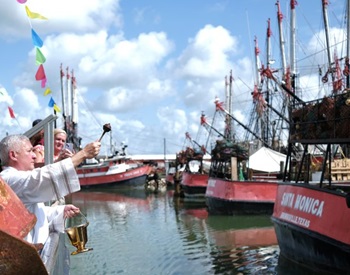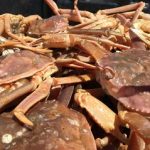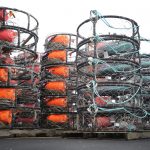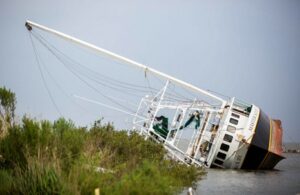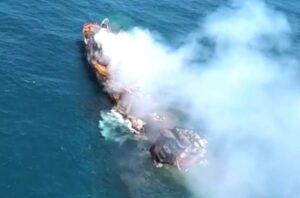Tag Archives: Texas Shrimp Association

Texas: Shrimping grinds to a halt as import oversupplies add to ongoing woes
The Gulf shrimping industry, including the Brownsville-Port Isabel fleet, shrinking steadily over the last couple of decades, is now in a state of near total collapse thanks to new, unprecedented challenges in addition to the usual. So says Andrea Hance, executive director of the Texas Shrimp Association, who said she and her husband have put their two shrimp boats up for sale because it’s become impossible to make money fishing for domestic shrimp anymore. About 95% of the local fleet is tied up, most fleet owners are cutting their crews loose, and just about everybody Hance knows is trying to sell their boats and shrimping licenses, she said. >click to read< 19:09
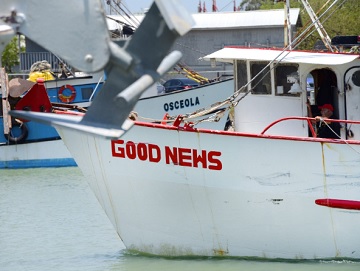
Shrimping industry facing historic challenges
Andrea Hance, executive director of the Texas Shrimp Association, headquartered at the Port of Brownsville, said in April that the high cost of fuel was preventing a lot of boats from going out. The price of fuel has fallen in recent weeks, though in a case of unfortunate timing some owners filled up before prices starting dropping, she said. With a typical fuel tank capacity of 15,000 to 20,000 gallons, 10 or 15 cents either way makes a big difference, said Hance, who owns two shrimp boats with her husband, Preston. One of the boats is in dock for repairs and the other was filled up at $4.40 a gallon of diesel — before it started coming down, she said. >click to read< 10:04
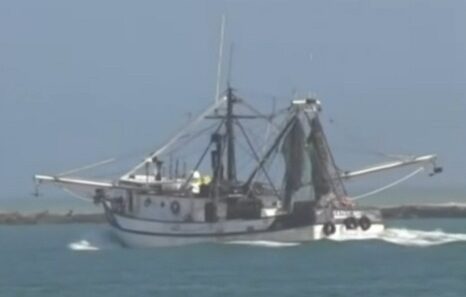
Low fuel prices may have saved Gulf Coast shrimpers
Texas shrimpers had a painfully low amount of shrimp harvested in the Gulf in 2020. It dropped from an annual average of 45-50 million pounds of shrimp to 38 million pounds. Yet in the beginning stages of a new year, there is interesting news about what actually happened. According to Andrea Hance with the Texas Shrimp Association, “We actually ended the year on a fairy positive note and it’s kind of hard to believe,,, video, >click to read< 16:48
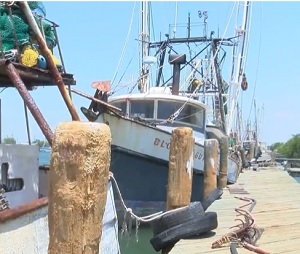
Brownsville: How Coronavirus pandemic is affecting shrimp producers
About two months ago, one of Andrea Hance’s boats came in with about 10,000 pounds of shrimp. Hance said on average the price of shrimp that they get from the boat is about $5, but buyers were not willing to pay that much. “They were coming back after they told us that they were not going to bid at all, you pressure them a little bit and then they said well we’ll give you a bid, but you’re not going to like it,” said Hance. “Well we ended up selling our shrimp for $3 a pound so we lost quite a bit of money on the last trip.” These are prices that John Keil Burnell, who is one of the owners of Shrimp Outlet in Brownsville, is seeing. Video, >click to read< 16:16

South Texas shrimpers cling to culture as industry undergoes change
Doan Pham leaves Rockport Harbor just after after 6 a.m. aboard his 40-foot shrimp boat named Margie.,, From a small cabin at the front of the boat, Pham reaches out to other bay shrimpers by radio.,, This is how Pham, one of the few remaining bay shrimpers in Texas, has started almost every morning for the last 41 years. The number of shrimp boats operating in Texas has drastically decreased since the late 1980s. That’s also when sales of farm-raised shrimp imported into the U.S. from other countries began to take off. >click to read< 12:28
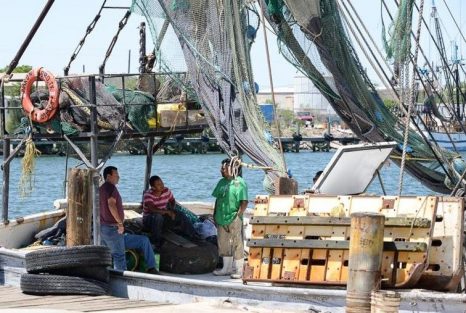
Shrimp industry eyes visas; Another 30,000 seasonal workers to be allowed in
The head of the Texas Shrimp Association said it’s unclear how much a Trump administration decision allowing another 30,000 foreign seasonal workers into the United States this year will help the state’s shrimpers. The 30,000 extra H-2B visas the government said it will issue are above the usual cap of 66,000 visas per fiscal year — 33,000 the first half and 33,000 the second half. The domestic seafood industry, seasonal hotels, landscaping companies and other businesses rely heavily on the H-2B program to fill positions, though the strong economy is making it harder than usual for employers to find enough workers. >click to read<09:31

Southeast Texas shrimpers struggle with slow season
Shrimp boats along the Southeast Texas coastline remain docked as their owners try to navigate an industry whose hardships haven’t stopped since Tropical Storm Harvey entered the Gulf of Mexico a little more than a year ago. With federal regulations curbing production and unfavorable sea conditions hampering shrimp populations, Port Arthur and Sabine Pass shrimpers are hoping for the best after a season of loss. Peak shrimping season, from mid-July to October, is closing out this year with about 20 to 25 percent less production than last year, Texas Shrimp Association executive director Andrea Hance said. >click to read<18:38
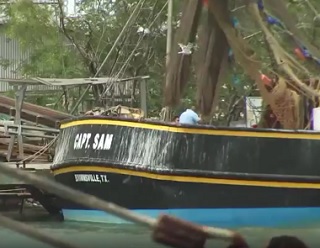
Shrimpers Still Impacted by Shortage of Workers
Shrimpers in the Rio Grande Valley say they are still experiencing a shortage of workers. Captain Jesus Moreno tells CHANNEL 5 NEWS it’s a tough job. He explains, new shrimpers quit within days and ask to go home. This year, the number of visas issued under the H2B program expanded. Still, only about 15 to 20 percent of the shrimpers received a visa worker. KRGV’s Christian von Preysing spoke with Andrea Hance with the Texas Shrimp Association. She says Texas shrimpers need a total of 750 workers. >click to watch<15:02

Gulf shrimp industry reeling from labor shortage
Nello Cassarino needs about 150 workers to dehead, peel, sort, package and freeze nearly 60,000 pounds of shrimp each day at his processing plant on Harborside Drive. And finding laborers is particularly difficult right now.,,, The industry has challenges from imported shrimp, but the labor shortage is the biggest issue commercial fishing faces, she said. Processing work typically pays about twice the minimum wage, which would be about $14 an hour, although it depends on the amount of shrimp being processed, Hance said. Pay for boat crews is more difficult to break down into an hourly amount because workers live aboard the boat for 30 to 45 days at a time. But workers may receive about $5,000 for a month at sea, depending on the catch, Hance said. >click to read<15:45
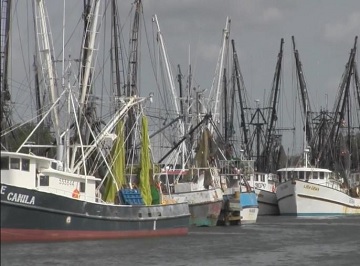
Texas Shrimp Industry Lacks Willing U.S. Workers
It’s two weeks in the Shrimp Season and Texas shrimpers are dealing with another worker shortage. Last year about 20% of the Texas Shrimp fleet stayed in Port from a lack of workers. Andrea Hance is Executive Director of the Texas Shrimp Association based in Brownsville. She told The Texas Standard that about 8 to 10 percent of the state’s shrimp boats are still tied up at docks. “And those boat owners or captains what happened to them is they don’t have enough people to even man the boat, um, so they may only have one other person, well, the boat needs at least three to go out and efficiently operate.” >click to read<11:48
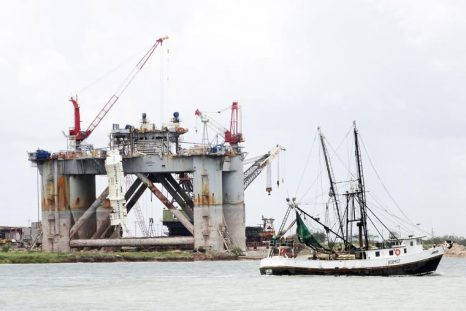
Shorthanded – Shrimp industry fears worker shortage
The Texas shrimp industry is celebrating a handful of recent legislative wins while also dreading next year’s shrimp season if changes aren’t made to the seasonal foreign worker visa program.
The Brownsville-Port Isabel shrimp fleet starts this season, which opens today, without enough workers. Andrea Hance, executive director of the Texas Shrimp Association, estimates that 70 percent of the fleet’s 140 trawlers will head out to the Gulf shorthanded. >click to read<10:51

Gulf shrimp season opens Sunday in state and federal waters while shrimp boats will set out lacking workers
Tuesday’s blessing-of-the-fleet event at the Brownsville Shrimp Basin felt similar to the one a year ago, with a sermon from Father Mark Watters and an issue over the shortage of workers. After facing a slight scare of almost not making it to Brownsville, Watters said his 13th year blessing the Brownsville-Port Isabel shrimp fleet was not only a number, but a message of multiplication of double profusion.“Now, 13, in the kingdom of heaven, that number, when you see it in scripture, what the enemy has stolen and made people superstitious about is actually a kingdom number that equates to double profusion,” he said. Still, the shortage of foreign workers will remain a challenge the shrimp industry has to overcome. >click to read<10:56
Roughly 150 Boats Take Part in ‘Blessing of the Fleet’ – The executive director of the Texas Shrimp Association says, however, a shortage U.S. citizen and foreign workers will cost the industry an estimated $700,000 per day this year. Video,>click here<

SIMP: Federal monitoring program will track foreign imports
A decision by Congress to add imported shrimp to the Seafood Import Monitoring Program is good news for an industry not used to hearing good news. The Gulf shrimp industry has struggled against a rising tide of cheap foreign imports for years, making it tough for domestic shrimp boat operators to make a living. Combined with the factors, this situation has led to a dramatic decline in the size of the Brownsville-Port Isabel shrimp fleet.,, The purpose is to thwart illegal, unreported and unregulated fishing activity. >click to read<10:38
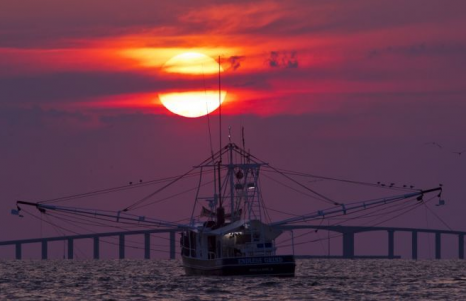
US Shrimp business making slow progress
Despite low dockside prices and other setbacks, local shrimping families say they have hope for this year and those to come, pointing to signs of recovery that are small, but nonetheless seen as positives. The industry got a big shot in the arm earlier this month when President Donald Trump signed into law an appropriations bill that includes money to monitor shrimp coming from other countries into the US, to verify that the companies involved are acting in accordance with US trade laws. >click to read<16:19
Shrimpers hoping for relief from foreign worker shortage
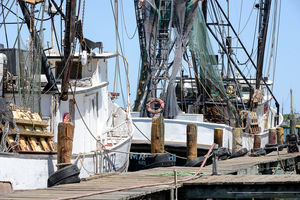 Rio Grande Valley shrimpers, faced with a crippling shortage of foreign workers due to Congress’ failure to renew the H-2B Returning Worker Program, may have a glimmer of hope in the federal spending bill signed into law May 5. The bill contains language authorizing the U.S. Department of Homeland Security to raise the cap on the number of foreign workers with H-2B visas. U.S. companies can hire in fiscal year 2017 from 66,000 (33,000 for each half of the fiscal year) to nearly 130,000. The question is whether Homeland Security will follow through and raise the cap, and how soon. Andrea Hance, executive director of the Texas Shrimp Association, said owners of shrimp fleets and processing plants on the Texas coast are in desperate straits for want of workers, with the Texas shrimp season set to reopen in mid-July, she said. click here to read the story 12:48
Rio Grande Valley shrimpers, faced with a crippling shortage of foreign workers due to Congress’ failure to renew the H-2B Returning Worker Program, may have a glimmer of hope in the federal spending bill signed into law May 5. The bill contains language authorizing the U.S. Department of Homeland Security to raise the cap on the number of foreign workers with H-2B visas. U.S. companies can hire in fiscal year 2017 from 66,000 (33,000 for each half of the fiscal year) to nearly 130,000. The question is whether Homeland Security will follow through and raise the cap, and how soon. Andrea Hance, executive director of the Texas Shrimp Association, said owners of shrimp fleets and processing plants on the Texas coast are in desperate straits for want of workers, with the Texas shrimp season set to reopen in mid-July, she said. click here to read the story 12:48

Shrimp industry grant proposed
The Texas Shrimp Association may be in line for a $300,000 grant from the Texas Commission on Environmental Quality, which will distribute a portion of the billions of dollars in RESTORE Act money generated by fines paid out by BP stemming from the Deepwater Horizon oil spill disaster. The proposed grant is included in a draft project list of more than 200 Texas projects totaling $1.1 billion that were submitted for RESTORE Act funds. The list will go into creation of a draft “Multi-Year Implementation Plan,” which eventually will be posted in the Texas Register for a 45-day public comment period before a final MIP is developed. That document then will be submitted to the Treasury Department for final approval. In other words, the grant isn’t a done deal, though TSA Executive Director Andrea Hance is keeping her fingers crossed. TSA would use part of the money for marketing and promotion, part of it for consumer education and tourism — including shrimp tours for Winter Texans — and some of it for social media campaigns that market wild-caught Gulf shrimp directly to consumers as opposed to restaurants, she said. Read the article here 08:53
Texas Shrimp Association industry director steamed over Deepwater Horizon Restore Act money
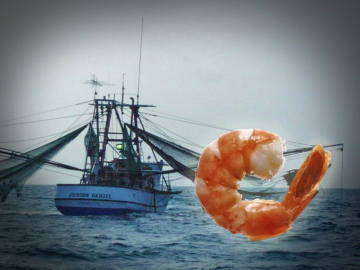 Andrea Hance isn’t happy. The executive director of the Texas Shrimp Association said that of the billions of dollars in RESTORE Act money — fines related to the Deepwater Horizon oil disaster in 2010 — that have been distributed to various groups in Gulf states, her industry received nothing for marketing and promotion, even though Texas shrimpers were significantly affected by the worst oil spill in U.S. history. It may all come down to the fact that, historically, the state’s industry has never had much of a voice, thus few people outside the industry understand it. But that doesn’t make Hance, who took the helm at TSA three years ago, feel any better about it. People assume that because the oil, which gushed from the seafloor for 87 days roughly 42 miles from the Louisiana coast, didn’t stray into Texas waters that the state’s shrimpers weren’t affected. In fact, when state and federal waters off Texas are closed to shrimping each year from mid-May to mid-July, the state’s fleet depends on the waters off Louisiana. Read the rest here 10:01
Andrea Hance isn’t happy. The executive director of the Texas Shrimp Association said that of the billions of dollars in RESTORE Act money — fines related to the Deepwater Horizon oil disaster in 2010 — that have been distributed to various groups in Gulf states, her industry received nothing for marketing and promotion, even though Texas shrimpers were significantly affected by the worst oil spill in U.S. history. It may all come down to the fact that, historically, the state’s industry has never had much of a voice, thus few people outside the industry understand it. But that doesn’t make Hance, who took the helm at TSA three years ago, feel any better about it. People assume that because the oil, which gushed from the seafloor for 87 days roughly 42 miles from the Louisiana coast, didn’t stray into Texas waters that the state’s shrimpers weren’t affected. In fact, when state and federal waters off Texas are closed to shrimping each year from mid-May to mid-July, the state’s fleet depends on the waters off Louisiana. Read the rest here 10:01
Brownsville Tx. – Shrimpers struggling to compete with imported shrimp
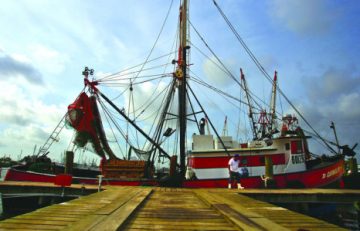 A slow start to the shrimping season has local shrimpers struggling to compete with imported farm-raised shrimp. Shrimpers are eager to return to local waters after being off for two months. “We have two boats and we’re probably one of the few people that actually jumped into this business without having a family history being in the business,” Texas Shrimp Association Executive Director Andrea Hance said. She’s been in the shrimping business since 2007. She said this season is slow, especially when it comes to their prized catch. “We have a niche market in terms of the large jumbo shrimp. We’re just not catching enough of them right now,” Hance said. She said they’re seeing a lot more small shrimp out in the Gulf which is unusual. A five-pound bag of locally-caught shrimp will cost someone about $30. Imported farm-raised shrimp will sell a similar bag for around $24. Video, Read the rest here 07:23
A slow start to the shrimping season has local shrimpers struggling to compete with imported farm-raised shrimp. Shrimpers are eager to return to local waters after being off for two months. “We have two boats and we’re probably one of the few people that actually jumped into this business without having a family history being in the business,” Texas Shrimp Association Executive Director Andrea Hance said. She’s been in the shrimping business since 2007. She said this season is slow, especially when it comes to their prized catch. “We have a niche market in terms of the large jumbo shrimp. We’re just not catching enough of them right now,” Hance said. She said they’re seeing a lot more small shrimp out in the Gulf which is unusual. A five-pound bag of locally-caught shrimp will cost someone about $30. Imported farm-raised shrimp will sell a similar bag for around $24. Video, Read the rest here 07:23
Texas shrimp industry battles hostile trends as season closes for two months
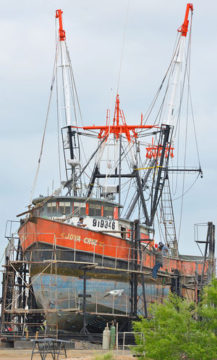 The Texas Parks and Wildlife Department’s Coastal Fisheries Division decided May 15 was a good time to close the state’s shrimp season because, according to its sampling, the average size and number of brown shrimp in Texas coastal waters is higher than the 20-year average. Texas closes its waters to shrimping from the coast to nine nautical miles out for roughly two months each year to give little shrimp time to grow before being harvested. The National Marine Fisheries Service typically imposes a closure out to 200 nautical miles at the same time. More, bigger shrimp is potentially good news for the state’s struggling shrimp industry, since big shrimp fetch higher prices, according to Andrea Hance, shrimp fleet owner and executive director of the Texas Shrimp Association. Read the rest here 19:27
The Texas Parks and Wildlife Department’s Coastal Fisheries Division decided May 15 was a good time to close the state’s shrimp season because, according to its sampling, the average size and number of brown shrimp in Texas coastal waters is higher than the 20-year average. Texas closes its waters to shrimping from the coast to nine nautical miles out for roughly two months each year to give little shrimp time to grow before being harvested. The National Marine Fisheries Service typically imposes a closure out to 200 nautical miles at the same time. More, bigger shrimp is potentially good news for the state’s struggling shrimp industry, since big shrimp fetch higher prices, according to Andrea Hance, shrimp fleet owner and executive director of the Texas Shrimp Association. Read the rest here 19:27

As the Brownsville Shrimp Fleet is blessed, Prices are plummeting
Andrea Hance , executive director of the Brownsville-based Texas Shrimp Association, said the blessing is especially welcome this season. “Unfortunately this year the shrimp prices, they’re starting to plummet,” she said. “It’s not going to be pleasant this year. What’s happened, the imports have shot up.” “shrimp prices are about $3 lower per pound than this time last year. That’s too big of a change. We had a boat that came in the other day that averaged $3.50 a pound. (Prices) plummeted because the big nationwide buyers, they have too much inventory. Right now imports are about as high as they’ve ever been.” Read the rest here 14:37








